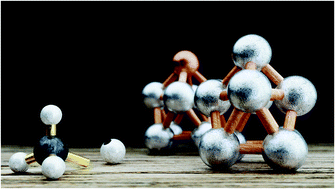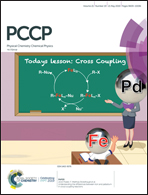Account of chemical bonding and enhanced reactivity of vanadium-doped rhodium clusters toward C–H activation: a DFT investigation†
Abstract
Herein, the chemical bonding of both pristine rhodium (Rhn, 2 ≤ n ≤ 9) and mono-vanadium-doped rhodium (RhmV, 1 ≤ m ≤ 8) clusters was understood by density functional theory. The calculated results provided conclusive evidence that a single vanadium dopant thermodynamically stabilized the rhodium clusters by increasing the interatomic bond orders and henceforth the binding energy. Moreover, an in-depth account of the high bond order of RhmV clusters was presented by analyzing the intracluster bonding orbitals and the orbital composition. In addition, the reaction mechanism and thermodynamic parameters of C–H activation processes on both types of clusters were thoroughly investigated, and the results were compared. This comparison revealed that in addition to thermodynamic stabilization, the vanadium dopant enhanced the reactivity of the cluster toward C–H activation by reducing the activation barrier and endothermicity to a reasonable extent. Thus, the obtained results provide an insight into the structure and bonding of both types of inorganic clusters (Rhn and RhmV) and reveal the potential application of vanadium as a dopant for the enhancement of both stability and catalytic properties of rhodium clusters.



 Please wait while we load your content...
Please wait while we load your content...